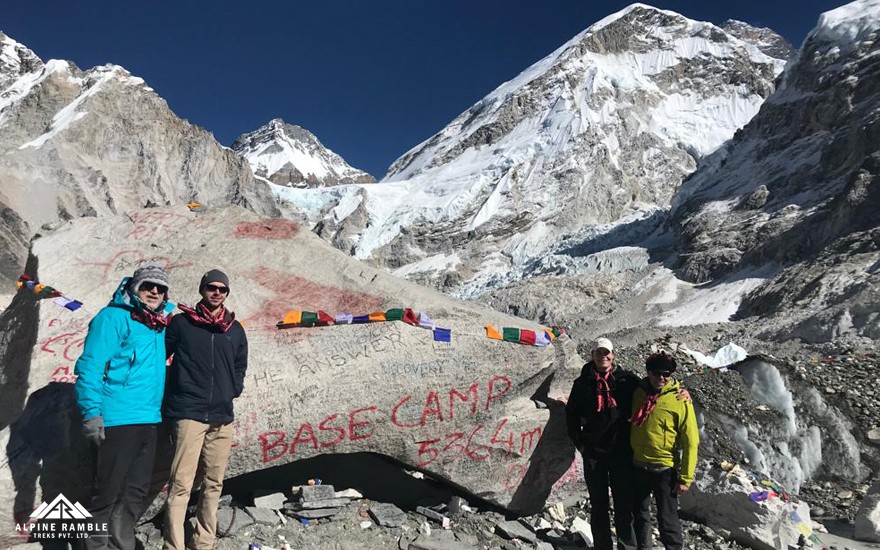
Trekking in Nepal
By Alpine

There are always many questions that begin once we decide on going on a trip. And especially if the said trip is a trek to the world-famous Everest Base Camp. A lot of factors come into play while planning for the trek to one of the highest places on earth. And one of the main things to know is, when to plan for the trek? The seasons, climate, and weather are something to keep track of when planning a trekking journey to the mountains. So, on this blog, you will find everything you need to know about the best time and season for the Everest Base Camp Trek.
To know what is the best season to visit, you first need to know the layout of seasons in Nepal, especially for trekking in the mountains. Typically in the tourism industry of Nepal for trekking, the seasons can be categorized into four parts as the same as the regular season that is known all over the world, i.e., summer, winter, autumn (fall), and spring.
It is no secret that the weather in the mountains is very unpredictable and one has to be very cautious and know the forecast before embarking on the trek. And the weather pattern differs in different seasons. Now, let us break down the pros and cons of choosing different seasons and whether all four seasons are suitable for trekking to the Everest Base Camp or not.
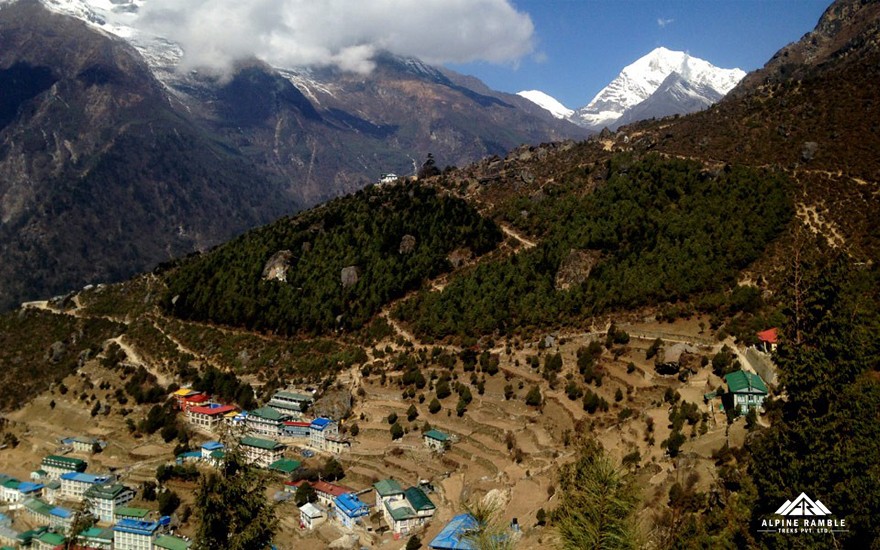
From the month of June to August, it is considered a summer but it is also a rainy season during this time and certain parts of Nepal experience high rainfall during this time. For those who have an affinity for greenery, this season is definitely for you. And when the rain stops and the sky clears, you will get the chance to see one of the most beautiful scenery of the mountains over the lush green hills.
Now, let us talk about why many people do not prefer trekking during the monsoon season. While trekking during the summer or monsoon season has its pros, it also has its cons. And one of the major con is the natural disasters that heavy rain brings during this season. Nepal is very prone to flooding and landslides during the rainy season, which makes traveling risky. You have to be prepared for disturbances such as roadblocks and flight cancellations. Not only that, the chances of getting clear views of the mountains are lower as well.
The high altitudes get less rain compared to the lower altitudes but regardless, one needs to thoroughly plan out and be very cautious while trekking during this season. And on that note, there are shadow regions in Nepal where there are fewer chances of rain, such as the Annapurna Circuit Trek, which can be done as an alternative to other trekking options.
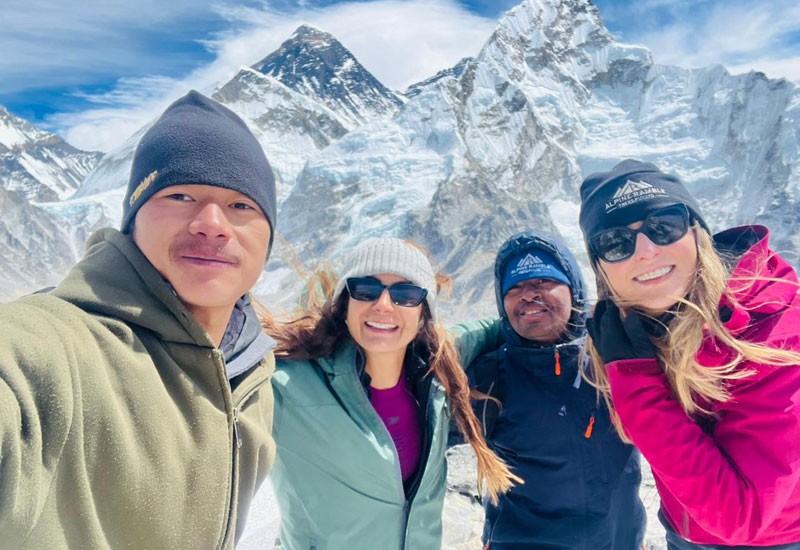
Contrary to popular belief, the winter season is one of the best times to do the Everest Base Camp Trek. The winter season actually offers some of the clearest views of the mountains in Everest. Another advantage of trekking during the winter is that the destination will be less crowded and you can enjoy the trek in a peaceful manner. So not only will you be blessed with the impeccable views of the towering peaks like Mt. Everest, Nuptse, Lhotse, Ama Dablam, etc., but there will also be fewer disturbances by people.
Winter is however considered to be off-season in Nepal, especially in the trekking destinations due to reasons such as extreme cold, snow and limited accommodation options. That being said, trekking to the Everest Base Camp is not an impossible feat to achieve; in fact, many people trek during the winter season. Thus, with the right preparation, winter trekking can be done smoothly.
As winter in the mountains is very cold, you need to pack all the essential items that will keep you warm and cozy during the entire trek. You can check out the packing list for the Everest Base Camp trek for more details. Being fully equipped to battle the winter cold of Everest will give you some of the best opportunities to get the best trekking experience.
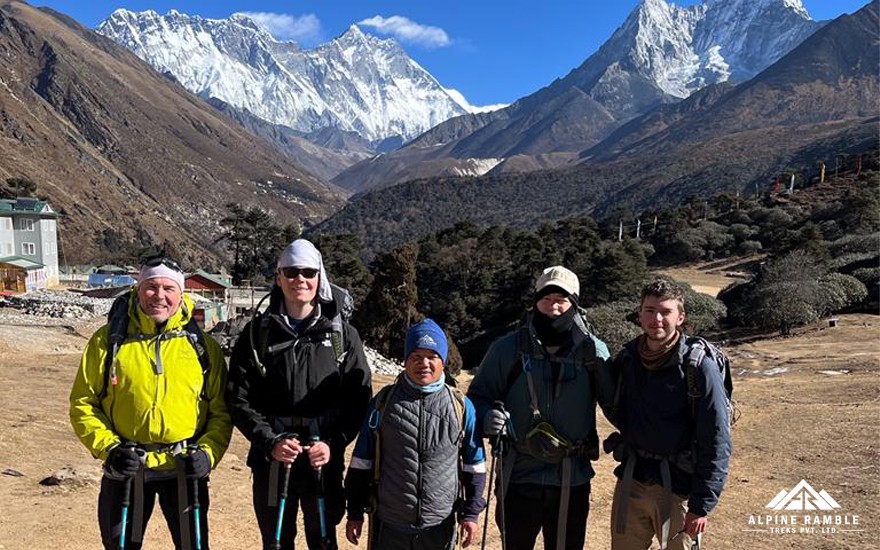
Autumn or Fall is actually considered as the best season to do the Everest Base Camp Trek. In fact, autumn is considered a tourist season in Nepal so tourists from all around the world travel during this time to various destinations in Nepal, such as Annapurna Base Camp and Langtang Valley for trekking. And because of the large number of tourists doing the EBC trek, the flight to Lukla is diverted from Manthali, Ramechhap, instead of a direct flight to and from Kathmandu airport.
One of the main reasons fall is considered one of the best seasons for trekking is because not only will you get clear skies and unblemished views of the gigantic mountains but the temperature will also be moderate and relatively easier to trek. The days are longer, which means longer daylight to see the mountains as well as you can take your time to trek.
You can expect moderate temperatures, pleasant weather, and clear skies to view the mountains, but Everest Base Camp is the most popular trekking destination in Nepal; thus, you should also be prepared to see a lot of people during this time. Therefore, if you prefer a quieter trail with a lesser crowd, you should look into winter trekking.
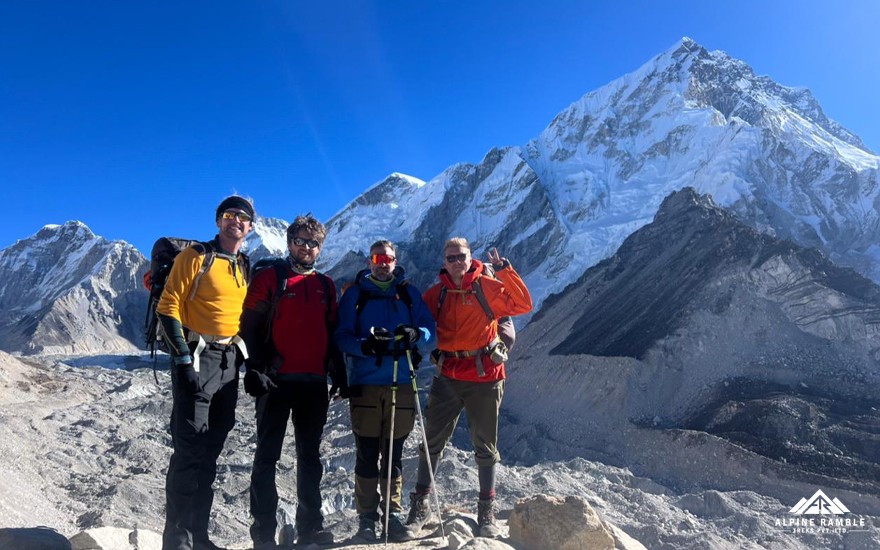
Spring is another season that is considered the best time to do the Everest Base Camp Trek. One of the specialties of this season is that this is also the blooming season where new wildflowers are in bloom. And the Everest Base Camp trail also goes through the Alpine forests below 3500 meters. You will have a chance to witness the beautiful blossoming of the rhododendron flower (National Flower of Nepal), which covers the lush green forests and fills them with different shades of red, white, and pink.
The temperature is moderate, even less cold compared to autumn, and the days are bright and sunny with clear views of the mountains. Trekking to the base camp will be one of the best experiences during this time but similarly to the autumn season, it will be a bit crowded due to the peak season as many trekkers and mountaineers will be there too.
What we need to keep in mind is that the mountain region is going to be cold no matter which season you choose to trek. The only difference is some seasons will be colder than others, specifically the winter season.
The average temperature in different seasons is listed below:
Lower region (Lukla to Tengboche)
Day Temperature: 15°C to 20°C (59°F to 68°F)
Night Temperature: 5°C to 10°C (41°F to 50°F)
Higher region (Dingboche to Gorakshep)
Day Temperature: 0°C to 5°C (32°F to 41°F)
Night Temperature: -3°C to 0°C (27°F to 32°F)
Lower region (Lukla to Tengboche)
Day Temperature: 5°C to 10°C (41°F to 50°F)
Night Temperature: -5°C to 0°C (23°F to 32°F)
Higher region (Dingboche to Gorakshep)
Day Temperature: -12°C to -5°C (10°F to 23°F)
Night Temperature: -20°C to -15°C (-4°F to 5°F)
Lower region (Lukla to Tengboche)
Day Temperature: 8°C to 12°C (46°F to 53°F)
Night Temperature: -2°C to 5°C (28°F to 41°F)
Higher region (Dingboche to Gorakshep)
Day Temperature: -8°C to 2°C (17°F to 35°F)
Night Temperature: -12°C to -5°C (10°F to 23°F)
Lower region (Lukla to Tengboche)
Day Temperature: 10°C to 15°C (50°F to 59°F)
Night Temperature: 0°C to 5°C (32°F to 41°F)
Higher region (Dingboche to Gorakshep)
Day Temperature: -8°C to 2°C (17°F to 35°F)
Night Temperature: -10°C to -3°C (14°F to 26°F)
During the peak trekking season, which is considered as spring and autumn, the flight to Lukla will be operated from Manthali airport in Ramechhap, which is 3-4 hours drive from Kathmandu. The flight used to take place from Kathmandu, but a few years ago, all flights to and from Lukla during peak season were diverted to Manthali airport due to high air traffic.
And for summer and winter, the flight does take place from Kathmandu airport, but there are always high chances of cancellations due to unpredictable weather and the flights are also limited.
Each season has something special to offer and there are different reasons why one might prefer one season over the other. But generally speaking, spring and autumn are technically considered as the best time to do the Everest Base Camp Trek. But overall, the winter season is also a good time to do the EBC trek with the right preparation and gear to tackle the cold. And in terms of summer, you will experience a lot of rainfall and have to be extra careful regarding the frequent landslides, but it is a great way to walk amongst the profound greenery. In the end, proper planning, preparation, and keeping track of the weather and a well-rounded itinerary are needed for a successful trek.